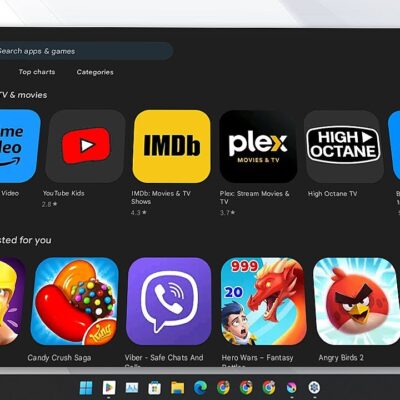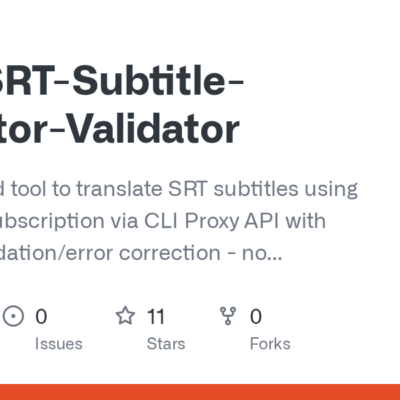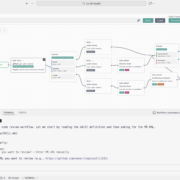
Custom ROM building used to take up to 24 hours on regular hardware and needed at least 400GB of disk space. Cloud services have changed this resource-heavy process into a quick 70-minute task.
App development integration has grown, especially for custom ROMs. Google Cloud’s free 12-month trial makes mobile app integration more available and quicker. Developers can now use virtual machines with 4 cores and 15GB of memory that cut down development time by a lot.
Let us guide you through everything you need to know about connecting custom ROMs with cloud services. We’ll show you how to set up your development environment and create optimized API integrations.
Understanding Custom ROM and Cloud Integration Fundamentals
Custom ROMs give users a way to personalize their devices beyond what manufacturers typically offer. They are modified versions of the Android operating system that developers create by tweaking the Android Open Source Project (AOSP). These modifications add unique features and create tailored experiences. When custom ROMs connect with cloud services, they open up amazing possibilities for both developers and users.
What are custom ROMs and why integrate them with cloud services
Custom ROMs are different versions of Android that let users completely change how their devices look and work. Unlike regular Android with Google services, they free users from manufacturer limits and often remove unnecessary apps while adding innovative features. Organizations today use over 80 different SaaS applications. This makes the link between custom operating systems and cloud environments valuable.
Cloud integration connects different applications and systems so they can share data. Developers can create versatile mobile experiences that naturally sync with web applications, databases, and third-party services by connecting custom ROMs to cloud services.
Key benefits of cloud-powered custom ROMs
Cloud-powered custom ROMs work better than traditional standalone installations. They improve performance and battery life through smart cloud-based resource management.
Many developers sourcing components for device-specific builds begin with an electronic parts website to locate essential modules like wireless chips, sensors, or development boards. These help ensure compatibility across ROM and cloud environments.
Cloud-powered ROMs also provide a central platform for integration. Developers don’t need complex point-to-point connections that require lots of coding. Cloud integration platforms make connections with minimal technical work. Business processes become streamlined as these platforms automate repetitive tasks and reduce errors.
Scaling becomes easier and more flexible compared to upgrading physical hardware. ROM developers can adapt to market changes and grow their offerings without spending much on infrastructure.
Essential tools and prerequisites for integration
Developers need specific tools and technologies to build effective cloud-powered custom ROMs:
- In addition to cloud platforms and dev tools, hardware compatibility often depends on sourcing quality components—many developers rely on a trusted electronic component distributor when customizing builds for specific hardware configurations.
- Development environment tools: Python, GCC (GNU Compiler Collection), Git, and JDK (Java Development Kit) for older AOSP versions
- API Management tools: These ensure secure and efficient interactions between applications
- iPaaS solutions: Cloud-based platforms that provide tools to connect different applications and data sources with accessible interfaces
- Cloud platforms: Services like Google Cloud or Microsoft Azure that provide virtual machines with enough processing power and storage to build ROMs efficiently
These components create a natural workflow between local development environments and cloud services. Developers can focus on creating innovative features instead of managing infrastructure.
Setting Up Your Development Environment for Integration
A reliable development environment serves as the life-blood of successful custom ROM and cloud service integration. Cloud platforms are a great way to get advantages for ROM development. Your environment needs proper configuration to streamline processes and reduce build times.
Configuring cloud platforms for ROM development
Google Cloud Platform (GCP) emerges as a preferred choice for ROM development. Its free 12-month trial makes the integration process more available. Your first step should be creating a VM instance with sufficient resources. Simple development needs 4 cores and 15GB memory, while 8 CPU cores with 32GB RAM works best for multi-ROM projects.
Custom ROM development demands substantial storage. Each ROM version requires at least 400GB of disk space. Developers working with multiple Android versions should use a 640GB SSD. This space allows concurrent builds of Nougat, Oreo, and Pie.
VM configuration directly affects build times. Cloud environments with optimized settings can cut build times from 24 hours on older hardware to just 70-90 minutes.
Installing necessary SDKs and APIs
After cloud platform configuration, you need to install development tools. Cloud SDK provides language-specific client libraries that support natural coding conventions and styles. These include:
- Google Cloud SDKs for Java, Python, Go, Ruby, PHP, C#, C++, Node.js, and ABAP
- RESTful API integration tools for authentication and data synchronization
- Command-line interfaces (CLI) for managing cloud resources efficiently
Custom ROM development requires essential packages like Python, GCC, Git, and Java Development Kit. Ubuntu users (recommended for AOSP development) should create a softlink between python and python3. Use sudo ln -s /usr/bin/python3 /usr/bin/python to prevent Python-missing errors.
Creating a seamless workflow between local and cloud environments
Local development and cloud environments need efficient workflows. Quick code pushing scripts from local to cloud environments make testing and validation easier.
EdgeWorkflow systems deploy workflow applications to edge computing environments. They offer “one-click” capabilities after configuration optimization. Developers can monitor computational tasks and get complete execution reports about time, cost, and energy usage.
GitOps practices help maintain consistency by using Git as the source of truth for application state and deployment configuration. This approach builds on Kubernetes’ declarative configuration system. Your development environment stays synchronized with production automatically.
API Integration Techniques for Custom ROMs
API integration is crucial to connect custom ROMs with cloud services. It enables continuous data flow and better functionality. Setting up these connections needs careful planning for both architecture and security. This will give reliable performance in various Android environments.
RESTful API integration strategies
RESTful APIs are the most common framework for custom ROM cloud integration. These interfaces follow a standard pattern. Data resources can be fetched using HTTP GET requests, while information updates use POST, PATCH, and PUT methods. This standardization gives custom ROM developers big advantages, especially when working with third-party services.
The first step is to understand the API endpoints before starting integration. Best practices suggest reviewing available documentation and testing endpoints with tools like Postman. This helps find potential issues early in development. Testing this way can reveal up to 70% of documentation errors before actual implementation starts.
Authentication and security best practices
Security is non-negotiable in API integration. Custom ROM developers must follow these essential security practices:
- Use HTTPS exclusively for all API endpoints to protect authentication credentials like API keys and tokens
- Implement timestamp validation in HTTP requests to prevent replay attacks
- Validate all input parameters immediately, including type, length, format, and range
- Think over OAuth 2.0 for third-party access instead of basic authentication
- Never expose sensitive data like usernames, passwords, or API keys in URLs
Handling data synchronization between ROM and cloud services
Data synchronization brings unique challenges in custom ROM environments. Developers must map field names between source and destination during integration. Source databases might use different naming conventions than cloud services. A field called “user_email” in your ROM’s database might be named “ContactEmail” in the destination cloud service.
Custom ROMs need special workflows to handle offline data. The best approach collects data at set time intervals. It stores information locally on the device and sends it once connectivity returns.
Implementing push notifications and real-time updates
Push notifications in custom ROMs are tricky since they usually need Google Play Services. These services aren’t always present in custom ROM installations. As one developer puts it, “The only possible way is using FCM”, referring to Firebase Cloud Messaging for standard push notification delivery.
All the same, custom ROM developers have options for Google-free solutions. Projects like UnifiedPush offer FOSS alternatives to Google’s FCM. These work well for devices without Google services. Time-sensitive applications can use WebSocket connections as another good option to maintain live communication channels.
Optimizing App Development for Cloud-Connected ROMs
Building optimized apps for cloud-connected custom ROMs needs careful balancing of performance, battery life, and user experience. Cloud services combined with custom Android environments create unique challenges that need specialized strategies to deliver smooth functionality.
Performance considerations for cloud-dependent applications
Cloud-dependent applications on custom ROMs don’t deal very well with latency issues, especially with multiple dependencies or cross-app interactions. Apps that have many dependencies outside the cloud environment often hit performance bottlenecks. Developers should match their workload’s needs to the right instance type from cloud providers. The wrong instance size guides you to either overprovision (raising costs) or have inadequate resources (hurting performance).
Load balancers are a vital part of performance optimization. They route traffic to instances that perform best and track metrics to spot underperforming components. On top of that, autoscaling features let you scale horizontally by adding or removing instances as needed. This helps maintain performance during busy periods.
Minimizing battery consumption in cloud-integrated ROMs
Battery optimization becomes tricky with cloud-connected ROMs. The main battery-draining activities include network access (very high effect), screen usage (high effect), GPS access (high effect), and CPU-intensive operations (high effect). Here are strategies to reduce these effects:
Start by putting off non-essential network operations until the device charges. Plan data-heavy tasks like syncing and database organization during charging times, especially with Wi-Fi available. Next, employ the processor’s awake time well when you get callbacks from sensor APIs. Last, group related operations together so your app’s processes get more idle time.
Implementing efficient caching mechanisms
Good caching makes apps perform better and use less battery. A cache that works well gets you a high hit rate, which means the data you want is there when you look for it. Cloud-connected ROMs should use a cache-aside pattern where apps check the cache before database queries. When cache misses happen, fill the cache after getting data to avoid doing the same work twice.
Testing cloud integration points
Testing cloud-integrated custom ROMs brings its own set of challenges.
When validating ROM and cloud service integration, many developers turn to emulators for speed. For hardware-specific tests, sourcing evaluation kits through an electronic parts website gives reliable access to test boards, connectors, and modules needed for compatibility testing.
Conclusion
Cloud service integration has changed custom ROM development by a lot. Developers can now build ROMs in just over an hour with cloud platforms instead of dealing with limited local resources. This radical alteration has changed our approach to custom Android development completely.
Cloud platforms with proper configuration and API integration create powerful opportunities for ROM developers. Traditional builds needed huge hardware resources, but cloud platforms now give optimized environments with 4-8 CPU cores and up to 32GB RAM. These resources combined with good security practices and quick caching help developers work faster and get better performance.
Battery life stays crucial for cloud-connected ROMs. ROM’s device longevity improves when developers sync data during charging and use efficient caching. On top of that, testing through emulators shows these optimizations work well with different device setups.
Cloud-powered custom ROMs point to an exciting future in Android development. The original setup needs careful planning, but shorter build times, uninterrupted data sync, and better scalability make it worth the work. Cloud services keep advancing, and we expect to see even more ways to create innovative mobile experiences through custom ROMs.








